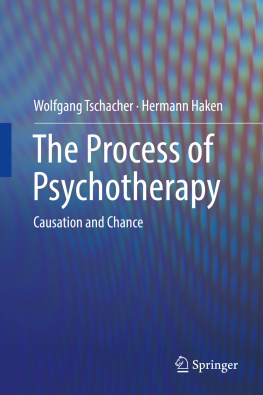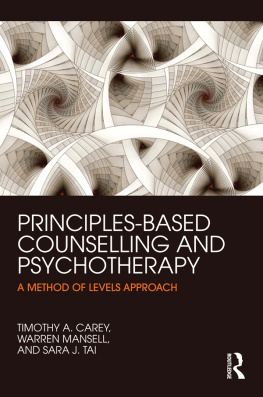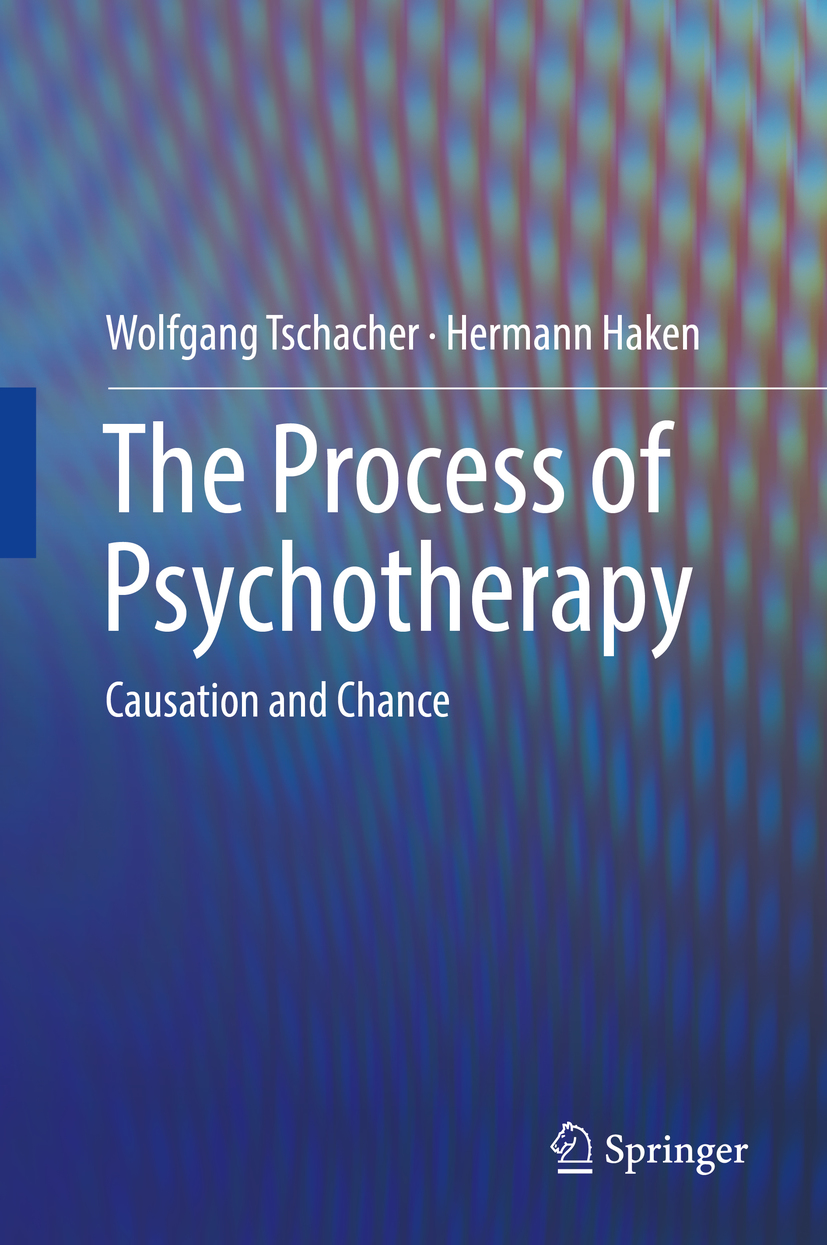Wolfgang Tschacher
Universittsklinik fr Psychiatrie und Psychotherapie, Universitre Psychiatrische, Dienste Bern, Bern, Switzerland
Freiburg Institute for Advanced Studies (FRIAS), Universitt Freiburg, Freiburg, Germany
Hermann Haken
Institut fr Theoretische Physik und Synergetik, Universitt Stuttgart, Stuttgart, Germany
ISBN 978-3-030-12747-3 e-ISBN 978-3-030-12748-0
https://doi.org/10.1007/978-3-030-12748-0
Library of Congress Control Number: 2019934105
Springer Nature Switzerland AG 2019
This work is subject to copyright. All rights are reserved by the Publisher, whether the whole or part of the material is concerned, specifically the rights of translation, reprinting, reuse of illustrations, recitation, broadcasting, reproduction on microfilms or in any other physical way, and transmission or information storage and retrieval, electronic adaptation, computer software, or by similar or dissimilar methodology now known or hereafter developed.
The use of general descriptive names, registered names, trademarks, service marks, etc. in this publication does not imply, even in the absence of a specific statement, that such names are exempt from the relevant protective laws and regulations and therefore free for general use.
The publisher, the authors, and the editors are safe to assume that the advice and information in this book are believed to be true and accurate at the date of publication. Neither the publisher nor the authors or the editors give a warranty, express or implied, with respect to the material contained herein or for any errors or omissions that may have been made. The publisher remains neutral with regard to jurisdictional claims in published maps and institutional affiliations.
This Springer imprint is published by the registered company Springer Nature Switzerland AG
The registered company address is: Gewerbestrasse 11, 6330 Cham, Switzerland
Preface
We have written this book to address people with a profound interest in all approaches to psychotherapy, as well as those interested in a general theory of psychotherapy. We allow two threads of reading, one that is accessible to practitioners and psychotherapists and one that includes mathematical sections and Info-Boxes, for advanced psychotherapy researchers and graduate students.
In this book, we have developed an encompassing model of the process of psychotherapy, based on the current state-of-the-art psychotherapy research. Therapeutic interventions are staged in the therapist-client relationship and become effective by the interplay of deterministic (causation) and stochastic forces (chance). This is modeled using the Fokker-Planck equation and by applying principles of complexity theory. Modern theory in psychotherapy is thus complemented by a structural-mathematical framework. Using this framework, we developed statistical tools, which can be applied to empirical time series of psychotherapeutic processes. We provide numerous empirical examples of such applications, expecting that the approach adopted in this work has the potential to advance psychotherapy research and psychotherapy in general.
Our modeling approach emphasizes that psychotherapy must explicitly focus on the time dependence of states, i.e., on the dynamics of systems. We need to consider both causation and chance in our model of change processes, and we argue that one-sided theories are insufficient for fundamental reasons. Weighing the benefits of various dynamical modeling approaches, the Fokker-Planck equation is chosen as a framework. The dynamics may even be of an emergent type (novel patterns and attractors may be formed during the change process); thus, we also consult synergetics, i.e., the theory of self-organization (Chap. ).
We prefer to view psychopathology as a hierarchical system of continuous variables. Psychopathology must be conceived of as dimensional rather than categorical, and all dimensions range from normal to disordered. Disorders are constituted by variables that denote signs and symptoms of dysfunctional thought, emotion, and behavior. The disorders are clustered in spectra of pathology (Chap. ).
Consistent with this hierarchy of psychopathology, we assume there is also a hierarchy of psychotherapeutic interventions, ranging from technical and specific to contextual and nonspecific. Common factors of psychotherapy are defined as the nonspecific qualities and contexts, which are generated by specific intervention techniques and at the same time prepare the context for techniques to be delivered. The common factors (e.g., self-efficacy) thus constitute a level above the techniques (e.g., role play). Intervention in psychotherapy is generally understood as an interplay of common factors and techniques, not their antagonism (Chap. ).
The Fokker-Planck equation describes the joint action of deterministic and stochastic processes (Chap. ). We transform the antagonism between specific and unspecific factors (the medical model versus the contextual model of psychotherapy) into a more appropriate schema of three types of interventions: deterministic, contextual deterministic, and stochastic.
When depicting psychotherapy, we need to model the therapeutic alliance, which is seen as the core of treatment. We formulate a one-dimensional minimal model of therapeutic action, which views the change of client states, e.g., the clients psychopathological symptoms, as a function of therapist states and therapist-client coupling constants. Using principles established in synergetics, we elaborate under which conditions a therapist in principle can have an impact on the client. We then capture the therapist-client interaction explicitly as an interpersonal exchange, extending the mathematical model from one-dimensional Fokker-Planck equations to a two-dimensional minimal model. This extended model predicts oscillatory and synchronized behavior and thereby supports the current empirical research on interpersonal synchrony, which is commonly based on cross-correlations of the therapists and the clients time series. We connect the cross-correlational approach of synchrony research to the theoretical coupling terms of the two-dimensional minimal model (Chap. ).
We subsequently extend our mathematical model to allow the classification and analysis of empirical data produced by therapy systems, creating a toolbox of computer algorithms and running them on exemplary time series. For the analysis of one-dimensional time series, we develop and demonstrate algorithms by which we can reconstruct the attractor landscape based on the time series data (hence, the deterministic term of the Fokker-Planck equation) and the proportion and location of chance events (the stochastic term of the equation). In addition, we also present algorithms that allow estimating the strength and shape of coupling in the two-dimensional model (Chap. ).
In the outlook (Chap. ), we summarize our findings by stressing the importance of a decidedly dynamical approach, which can even cover the temporal scale of a few seconds, pertaining to the now of consciousness. This high-resolution approach becomes possible by analyzing variables that represent processes of embodied cognition and emotion. We spell out which interventional types derive from the minimal model to define the Archimedes role of the therapist. Therapist personalityresilience and mindfulnessare essential therapist variables; the therapist must also be slow compared to the client. This allows the modification of client states by the leverage of an Archimedes-like unmoving mover. We also include the state of research on the synchronization of the therapeutic alliance and discuss the concepts of free energy, affordance, and embodiment. As is often true, there are numerous open questions, and we call for systematic empirical research that we hope will be instigated by the elaborate model and practical toolbox presented in this book.










